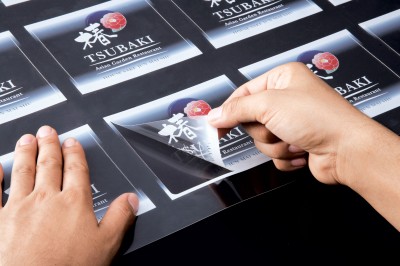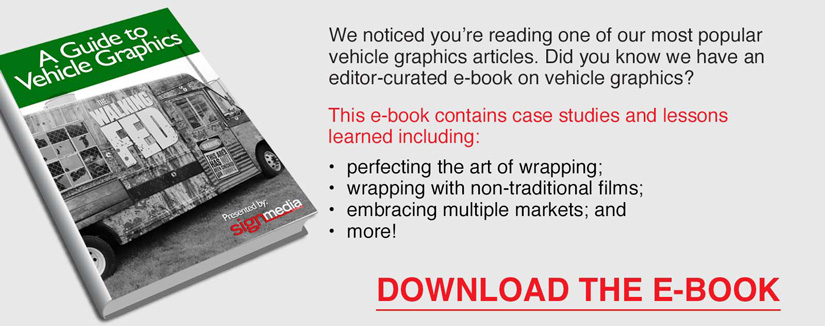By Laurie Weller
Ink technology in the digital printing sector has advanced dramatically in recent years, allowing print service providers (PSPs) to offer more products more profitably than ever. Indeed, one of the most significant new trends for the wide-format graphics market has been the introduction of specialty inks—including white, clear and ‘metallic’ formulations—that can add value to signs, banners, vehicle wraps, point-of-purchase (POP) displays, posters and decals, not to mention applications beyond signage, including labels, decorated apparel, packaging prototypes and advertising comprehensive layouts (also known as comps).
For those signmakers who have not already invested in wide-format digital inkjet printers equipped to handle specialty inks, now may be the right time to expand in this direction, as these inks are now mature, stable assets, suitable for use in any production environment. There is also substantial support from elsewhere in the sign industry, including software and media, which is making the inks easier to integrate into a sign shop’s existing workflow.
To take full advantage of the new generation of inks, it is important for each sign shop to determine the best production platform to serve its business model. Many ultraviolet-curing (UV-curing) printers, especially, are available with white and clear ink options, while ‘eco-solvent’ printers are fitted with white and metallic inks, among other specialty options.
Another consideration is the substrate. A flatbed model will enable direct printing onto rigid substrates for an efficient wide-format graphics workflow, while a roll-to-roll (RTR) device is well-suited for flexible vinyls, papers, banner materials, fabrics and films. Some highly versatile printers are available to help signmakers get the most output from a single investment.
White ink: The must-have
Today, white ink is more than just a specialty colour—it’s an entry point to new applications, as it enables printing onto clear media, reflective surfaces and dark substrates, rather than limiting graphics to white films, boards and/or papers. As mentioned, it is available for multiple production platforms, including UV-curing and eco-solvent printers.
In addition to the elegance of a simple graphic or text, white ink can be printed as a ‘flood’ beneath four-colour graphics to help make them ‘pop’ visually.
With the diversity of output that becomes possible with white ink, a sign shop can open the door to new markets for better overall growth and profitability.
Clear media
In the sign industry, white ink is often printed onto clear media for window displays, backlit graphics and many other applications that require some level of translucency or transparency.
Metropolitan West, for example, is an interior design firm that prints white gradients directly onto clear film and then installs it into glass dividers, doors and windows for office décor. As such, white ink has become fundamental to the firm’s design approach.
Elsewhere, white ink on clear media can commonly be found in product labelling and packaging on retail store shelves. Virtuoso Graphics, for example, often relies on white ink when producing labels for high-end cosmetics products.
As plastics are incorporated into product decoration, printing onto clear substrates allows customers to see through a label to an underlying product or surface, providing more of a seamless appearance.
There are already many types of high-quality clear media on the market from a variety of suppliers, including adhesive-backed films, shrink films, polyethylene terephthalate (PET), low-density polyethylene (LDPE), polypropylene (PP) and calendered polyvinyl chloride (PVC). It is important to ensure selected materials are compatible with the printer and ink. Polyester-based substrates, for example, must have a special coating before they can accept eco-solvent inks.









